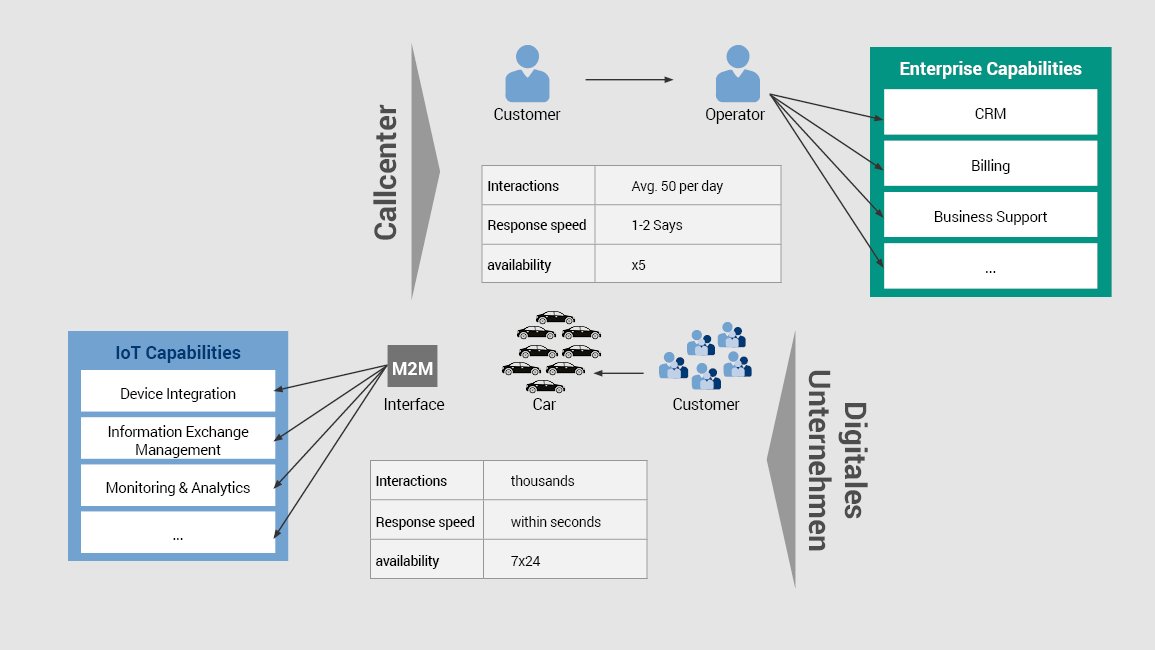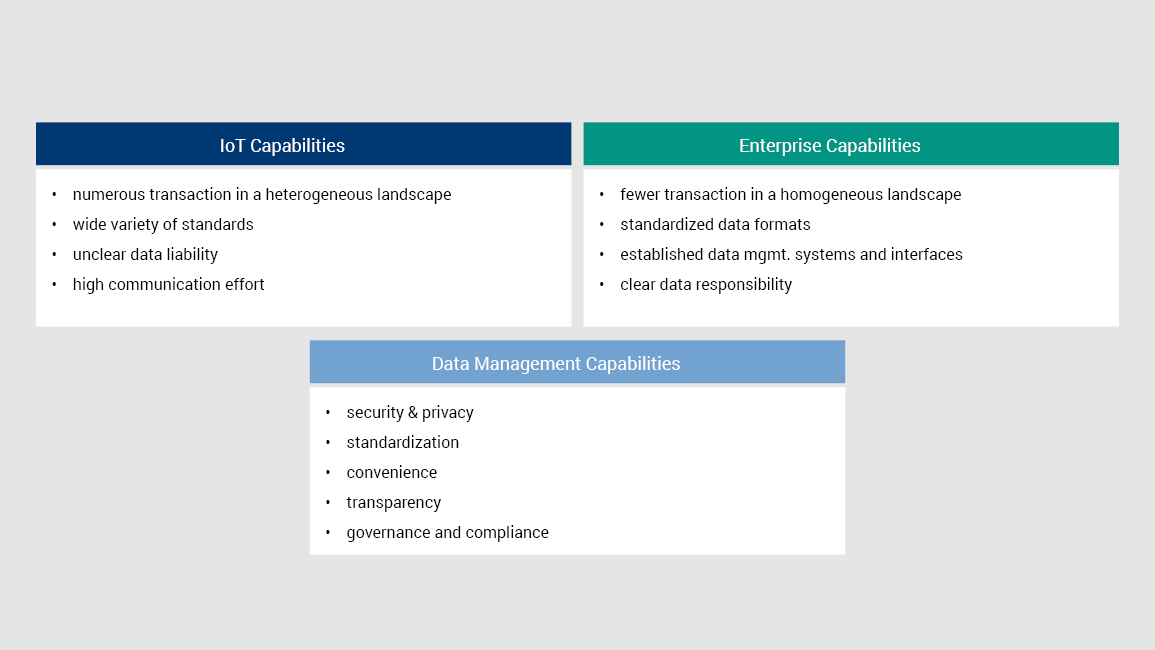Companies are increasingly looking at new digital business models and strategies. IoT is increasingly playing a driving role in this. When implementing IoT strategies, companies often ask themselves the following questions: How can an IoT solution be sustainably anchored in the company? What challenges arise from new IoT capabilities and how do rapidly increasing data volumes in digital processes affect the company's data management? This article presents an architecture-based approach to help solve these questions.
Customer Journey Mapping: What capabilities does an IoT use case need?
Many companies ask themselves how an IoT strategy can be implemented in concrete terms? In a proof-of-concept phase, an overarching manufacturer solution is then often set up that brings with it all the necessary capabilities and promises rapid implementation. However, it is often not until the industrial rollout that it becomes apparent that capabilities have been built up twice in the company or that isolated solutions have been created. But an assessment of the entire enterprise architecture at the beginning of the project would have caused too many delays. Companies are therefore faced with the challenge of creating a middle ground between isolated solutions and full integration into the company.
The solution is "architecture thinking." Viewing the end product as an independent architecture can help uncover the necessary interfaces and synergy potential. Experience has shown that breaking down a use case into the individual steps of its value chain or customer journey can be helpful in better uncovering and evaluating the capabilities that support each. In the next step, a more detailed examination of the capabilities is then required.
IoT Capabilities: How do capabilities for the Internet of Things differ from existing capabilities in the enterprise?
To understand the specifics of IoT capabilities, it is necessary to visualize the changes in the company's operating model. Using the example of a call center department, let's look at the interface to the customer: In the traditional enterprise, this interface is staffed by call center agents during a certain operating time, e.g., eight hours a day. The company is in daily contact with a fraction of its customers and often the information exchanged, such as changes to a contract, is processed within a few days. A digital company, on the other hand, must be able to communicate daily with the vast majority of its customers. However, the communication here does not happen through an agent, but usually through automated systems. Devices send interaction requests to the enterprise continuously throughout the day and expect the data to be processed in fractions of a second. This means that, in the case of the Internet of Things, the capabilities base of companies must be equipped in a much more reactive and automated way so that the associated data volume can be processed.

Data management for the Internet of Things
IoT capabilities are predominantly seen as data-centric due to the high degree of data proximity. Capabilities for integrating the new IoT capabilities, however, go far beyond traditional data management. For example, data for IoT capabilities is processed outside the enterprise, creating additional data security requirements. In traditional database systems, most data is collected from predefined and finite sources and stored according to strict normalization rules. In contrast, an IoT data management system is divided into an online real-time front-end that interacts directly with connected IoT objects and sensors, and an offline back-end that includes bulk storage and analysis of IoT data. Providing reliable and consistent data is a major challenge here, but it is indispensable for business success.
How do you integrate IoT capabilities into the enterprise architecture?
So how can IoT capabilities be efficiently integrated into the enterprise to deal with the flood of data caused by IoT? A high-quality and flexible data management represents a reusable and scalable solution that addresses the issues of security, data protection, standardization, convenience, transparency and governance.

However, existing data architectures are often so inflexible that new external data cannot be integrated or can only be integrated with difficulty, and processes cannot be standardized and optimized. Reasons for such problems are, for example, different terminologies in the data sets of different business units, historically grown data sets, no central responsibilities and no standardized data management processes. This leads to poor data quality such as duplicates and inconsistencies.
In order to fully exploit the potential of IoT capabilities and address the specific requirements for IoT data, further development towards flexible data management is necessary. Here, it is important to create a holistic view of the data and to clean up historically grown and inconsistent data structures and break up data silos that have already been created. In addition, employees and experts from the enterprise architecture (EA) should be integrated, since data management must always be viewed in the context of the entire enterprise architecture.
Summary
A holistic data management approach enables an integrated view of the enterprise architecture including IoT, enterprise and data management capabilities. This can create a scalable solution that meets the challenges of growing data volumes and integrates new IoT capabilities into the existing enterprise architecture. Existing capabilities need to be identified, reused or extended to avoid isolated solutions and data silos. A use case-driven approach can help to gain a clear view of the relevant architecture building blocks and their place in the enterprise.







